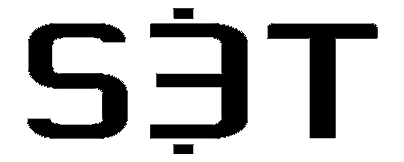S3T Feb 9 2024 - Gemini, EU AI Act, Buterin on AI & Crypto, The Line, Feeder Fights, Empathy in Action

😎️ In this edition of S3T:
- Emerging Tech: Bye Bye Bard, hello Gemini; how AI and Crypto will likely intersect; what the new EU regulations mean for AI.
- The Future of Urban Design: This ambitious desert city project could offer a new blueprint for ending urban sprawl and enabling more equitable access to nature.
- Nature Notes: Fights at the Bird Feeder. Scientists - with the help of citizen observers - figure out which species win the most.
- Change Leadership: Empathy is not just noticing the hardships of others; it's the courage to do something about it. Learn how to adopt and model a specific style of empathy that compels action and mobilizes people to drive change.
🎧 Listen to this episode on the S3T Podcast - Be sure to follow the S3T podcast so you never miss a show!
Emerging Tech: Bye Bye Bard!

Google Gemini replaces Bard
Try Gemini at gemini.google.com. Gemini represents Google's most powerful answer to ChatGPT to date. includes a web interface and a mobile app. It will soon be integrated with Gmail and other Google apps including the IOS Google App, also offers an AI model that you can integrate into apps via API. More details for developers here.
This in-depth comparison of Gemini vs ChatGPT suggests that Gemini may be a formidable competitor to ChatGPT and recommends that leaders experiment with both. Ethan Mollick's comparative review says Gemini "does not obviously blow away GPT-4. and actually underperforms GPT-4 in the so called "apple test" (asking the chatbot to write 10 sentences that end with the word "apple".)
Buterin on AI and Blockchain
In previous S3T Editions we've noted an emerging theme of AI + Blockchain convergence. Ethereum lead Vitalik Buterin has just amplified this theme in a longer thought piece on how AI and Blockchain could intersect.
Buterin shares four ideas on how AI and Blockchain will converge in this highly recommended post. These 4 ideas he says is an evolution of his previous superficial thoughts that "crypto decentralization can balance out AI centralization, AI is opaque and crypto brings transparency, AI needs data and blockchains are good for storing and tracking data."
Now, Buterin notes, AI's new generation of more powerful LLMs, and crypto's recent innovations in scaling, zero knowledge proofs (ZKPs) and multi-party computation (MPC) together open up 4 new ways that blockchain and AI will intersect, listed in order of level of difficulty & risk:
- AI as a player in a game
- AI as an interface to the game
- AI as the rules of the game
- AI as the objective of the game
Buterin provides in depth explanation of how each could work, in some cases with examples, as well as notes on implementation methods and risks. Great read.
EU AI Act
EU member nations voted unanimously to move forward in adopting the Artificial Intelligence Act. The Act includes a list of prohibitions banning the use of AI for specific purposes, as well as a list of criteria requiring certain AI products to be listed as "high-risk".
France resisted until the 11th hour in hopes of protecting its own AI businesses. A compromise agreement amended several portions of the rules.
I've noticed that the EU, the US and China have struck fairly different tones in technology usage and rule-making:
- EU - People First
- China - State First
- US - Corporation First
There are exceptions but the tendencies appears consistent. Going forward, it will be interesting to see what kind of thinking the UK brings to the discussion, and how the EU's rules impact rule-making elsewhere.
Urban Design
As noted in the Urban Design and Future of Real Estate S3T Panorama, one of the key open challenges for the future is how cities will minimize their environmental impact while providing more equitable quality of life for residents.
One new candidate solution for that challenge is "The Line" an ambitious smart city concept that is a cornerstone of Saudi Arabia's 2030 vision to remake itself and lessen its dependence on fossil fuels. The city will be arranged in a 106 mile line, house 9 million residents, have no cars, no carbon emissions, and renewable water and energy.
Special Features
🔐 Paying members can read a deeper dive on criticisms of the city's linear design, as well as the counterintuitive ways the non-sprawl linear design may achieve conservation and equity goals more effectively than current city layouts.
🔐 S3T Panorama on the Future of Urban Design and Real Estate
Also: Women now own the majority of US homes.

Nature Notes: Feeder Fights
If you have a bird feeder you may have noticed occasional rivalries and scuffles between different birds over who gets to eat first. Scientists have taken a data driven approach - ranking the competitive abilities of 136 species based on 7,653 observations gathered through Project Feederwatch - to determine which birds win most often. See how your favorites stack up in this fascinating interactive feature from Cornell.
This set of findings is a great example of the value of Citizen Science - engaging community members to help gather or process observation data and contribute to findings. Prior to Project Feederwatch, scientists had only been able to work out dominance hierarchies for a few species (and that took decades).

CHANGE LEADERSHIP
Accountable leadership turns empathy into action
Inspire Change by Cultivating Empathy within Yourself and Others 🌟
The Urgency of Change
If you ask almost anyone in these industries about "what needs to change" they'll tell you roughly the same list. If you were to ask them why the change is needed, they could point you to adverse impacts being felt by customers, patients, healthcare workers, farm workers, vulnerable populations etc. If you asked how urgent this is, they would indicate its urgent. So why isn't it happening or why isn't it happening faster?
In every industry, from healthcare to finance, there's a universal list of necessary changes. The problems are well-known, and their adverse impacts are felt by customers, patients, and workers across the board. The urgency is palpable, yet why does change often seem elusive?
The Perceived Barrier to Change
We all acknowledge the need for change, but in our minds, it's never the right time. It feels impossible or overwhelming, buried beneath a mountain of daily tasks. The result? Glaring problems persist, causing harm for longer than they should.
The Missing Ingredient: Empathy
So, what's the missing piece of the puzzle? It's empathy. Now, most leaders will say, I have empathy. But let's first make sure that we have the right view of what empathy really is.
First, double-check your understanding of empathy
Why it's imperative to revisit our understanding of empathy.
Our thinking about leadership often has a misconception that equates empathy with emotional vulnerability or a kind of excessive sensitivity. And we think that detract from objective decision-making.
Think about these statements:
- "We're going to have to make some difficult decisions"
- "We need to set clear priorities"
- "We have to be realistic"
- "We have to be practical"
These statements sound right. And in some contexts they are. But if we're using these statements to turn a blind eye and avoid empathy, then we're making a serious mistake.
Empathy is not an emotional element that has to be overlooked or ignored in the name of realism or practicality or leadership making difficult decisions.
Beware of false tradeoffs. In this case a false trade off of strengths versus weakness:
- Weakness equals being empathetic, and overly influenced by concerned for others
- Strength equals ability to grit your teeth and “make a difficult decision."
This kind of trade false trade plays itself out in many many many private leadership discussions, where more transparency is needed.
This view mistakenly equates practical leadership with a disregard for empathy, suggesting that tough decisions necessitate a cold detachment from the concerns and well-being of others. These false tradeoffs allow harmful status quo conditions to persist under the guise of practicality or necessity.
So what does that mean for leaders?
Empathy that doesn't result in action isn't real empathy
Empathy is not just noticing the hardships of others; it's the courage to do something about it. The courage to take a different course and find a better way. The courage to take responsibility, to challenge the status quo and make things better. And the resolve to mobilize others to act as well.
Empathy without courageous action isn't empathy. It's just a momentary pang of conscience that you decide to ignore.
True leadership empathy involves integrating this awareness into actionable strategies that address the needs and concerns of those around us. It's about moving beyond a superficial acknowledgment of others' situations to fostering a culture where empathy drives innovation and positive change.
So how do we do that?
How to use Empathy to effectively drive change
To drive change effectively, you must do the following 5 steps:
